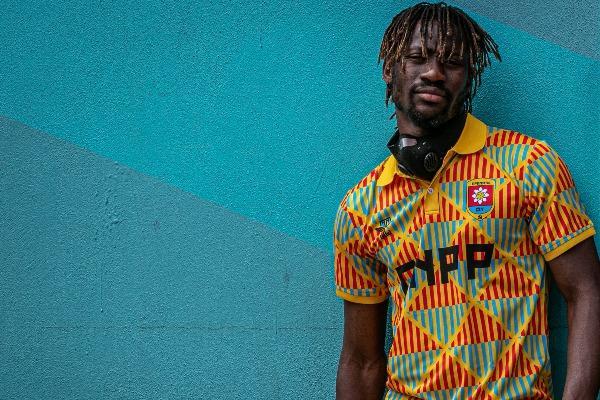Your Cart is Empty
From Mesopotamia to Ancient Greece, we've hit the books to design history's most creative football kits.
Here are a few of our biggest projects, with more on the way...
The Design Process
We knew tackling Ancient Greece had be our biggest historical project, so Robby set out to do what he does best - scouring through the history books to find the 24 teams who would have qualified for Ancient Greece's very own Champions League, from Helios Rhodes to FC Massalia to everything in between.
Extensive moodboarding - and conversations with well-read friends in the classics world - followed, before each team had a kit they could call their own. Design inspiration came from all over, with Ancient Greek architecture, coinage, ceramics and art interplaying with contemporary design elements we're used to seeing (or not used to seeing) in modern football.
A Trip to Greece Followed...
View all
We don't just love football kits for their design, though. What's most potent is how a kit relates to a club's history, culture or fandom, and so we took world building to its logical extreme. What started as 24 jersey designs soon became a fully-realised Hellenic League of Champions, the knockouts of which would culminate in a final between fierce rivals (and Trojan War opponents) Troy City and Mycenae.
In an unprecedented commitment to the bit, we even headed to Athens to capture the kits in their spiritual birthplace. Throughout the trip we committed to a diet of souvlaki and Greek beer to pay homage to the diet of the Hellenic League of Champions spectator (do not fact check).
Tragedy Strikes Pripyat
On Saturday 26th April 1986, Fifth Division Soviet side FC Stroitel Pripyat were preparing for a historic cup semi-final against FC Borodyanka, their last match before moving to their new Avangard Stadium.
But 8 hours earlier that morning, Chernobyl's No.4 nuclear reactor exploded. Pripyat - a commuter town just a few miles from the power plant itself - was evacuated 36 hours later. The Avangard Stadium was never played upon, and the overgrown pitch now stands as a solemn reminder of the disaster to any tourists who visit.
Giving Pripyat A New Kit
PICK UP YOURS!
Our FC Stroitel Pripyat shirt is an imaginative take on what the club kits may have looked like. The pattern is inspired by Constructivism - an art movement originating in Russia that's closely associated with the Soviet Union - while the colors are taken from the Pripyat coat of arms.
The crest is a modified version of these coat of arms, and the shirts have LEGASOV (Russian spelling) on the back to pay homage to Valery Legasov, a Soviet chemist who investigated the causes of the disaster and went to great lengths to mitigate both its consequences and the chance of any future disasters.
Dusting Off The Books
The Mesopotamian League project started as a creative challenge for Robby, who would dust off his old Mesopotamian history books to create concepts in the morning and release them online by the afternoon. As pre-orders kept coming, so did the teams, until he'd created 19 teams, each with distinct kits, crests and lore.
Unsurprisingly, accurate records for the period are few and far between, giving him plenty of creative freedom in dreaming up the teams, from the Babylon Akkadi to Uruk Sumerians and everyone in between. People say football started when the Premier League began, but we say it started when arch-rivals Umma FC and Lagash Vultures faced off in the 2450 BC Mesopotamian Cup final.
Creating The Kits
VIEW THE WHOLE COLLECTION
Robby's historical research wasn't just used to figure out the teams. As a preview of what Icarus would soon do for (real) teams around the world, Robby drew on the history and culture of the area around each club for their kit designs.
Whether the point of inspiration was mythology (AFC Nippur), geography (Ebla Forgotten), or textiles (Uruk Sumerians) - every team's kit design was designed with culture - and historical nerds - in mind.









































































